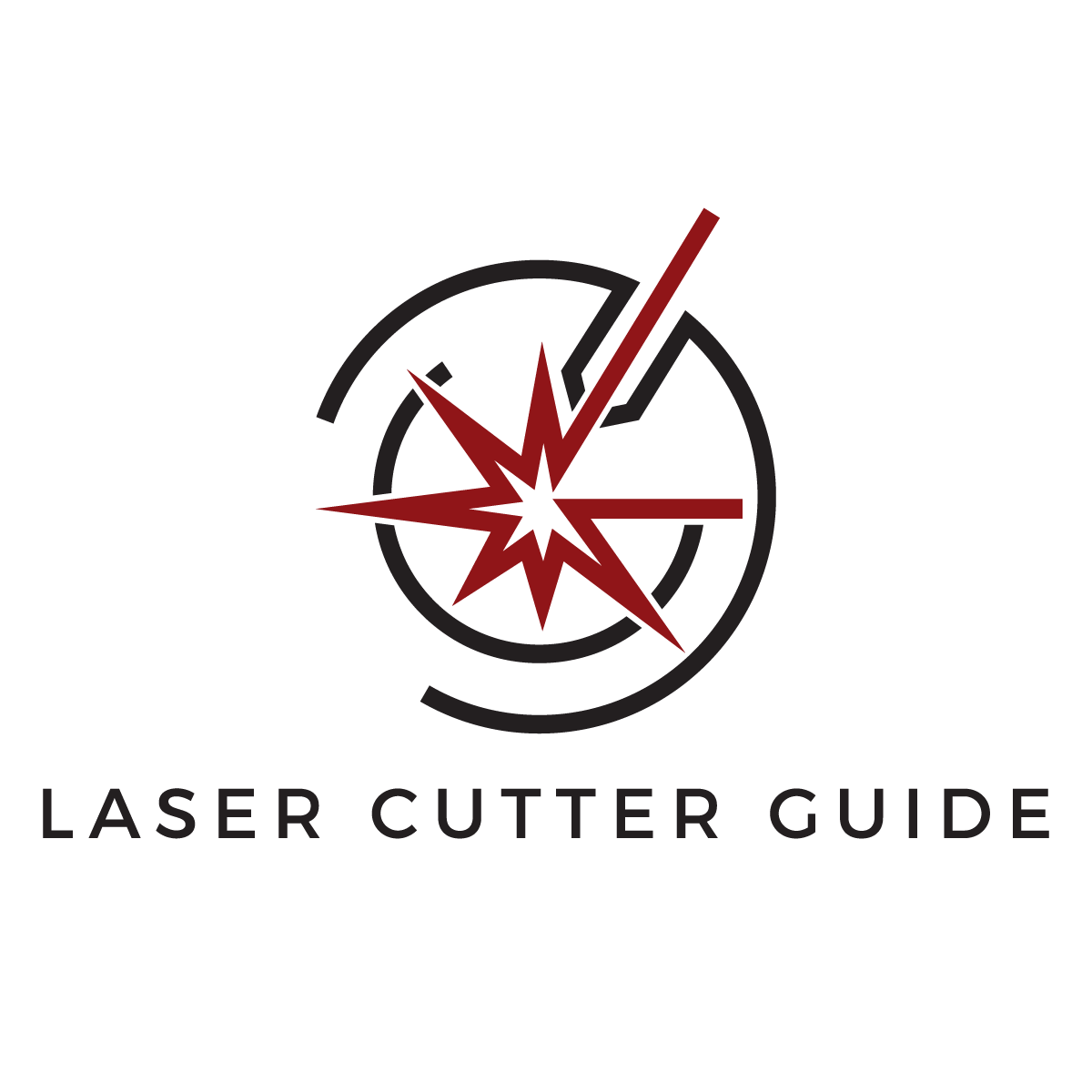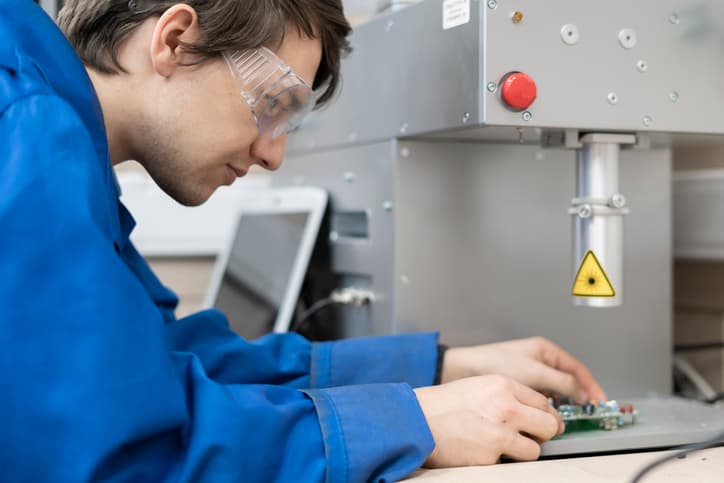Laser fracture-controlled cutting is a process that uses a laser beam to fracture a material in a controlled manner. The method is often used in the aerospace and automotive industries to cut materials such as titanium, stainless steel, and aluminum. The process is highly accurate and is able to produce smooth edges with minimal distortion.
The process of laser fracture-controlled cutting involves a high-power laser beam being directed at the material, creating a small kerf, or cut. The laser then fractures the material along the kerf, causing it to break cleanly. The cut is completed by a mechanical process, such as a punch or a water jet, which pushes the material out of the way. The laser type used in fracture-controlled cutting depends on the material being cut. For example, a CO2 laser is able to cut thick steel, while an Nd:YAG laser is well suited for cutting aluminum and titanium.
Thus, laser fracture-controlled cutting is a valuable method for cutting materials in the aerospace and automotive industries. The precision and smooth edges that are able to be achieved using the process make it a popular choice among manufacturers. The type of laser used plays a crucial role in the quality of the cut, and the selection is made based on the material that needs to be cut.
What is Laser Fracture-Controlled Cutting?
Laser fracture-controlled cutting is a cutting method that uses a laser beam to create a controlled crack in a material, which then propagates through the material and leads to separation. The innovative cutting technique is less affected by the material’s properties, such as hardness or brittleness, than traditional cutting methods. Hence, it is capable of producing accurate cuts with a few heat-affected zones. The method is particularly useful for cutting brittle glass and ceramics. It is a highly effective and efficient solution for various industrial and manufacturing applications.
What is the Process of Laser Fracture-Controlled Cutting?
Laser fracture-controlled cutting is a cutting process that uses a laser to make precise cuts in materials. The process starts by focusing a high-power laser beam on a small material area, creating a small fracture. The fracture then spreads through the material, creating a clean, precise cut. The method is particularly useful for cutting materials challenging to cut with traditional cutting methods, such as metals, plastics, and ceramics. These materials are commonly thick or have a high melting point.
What Type of Laser is used for Laser Fracture-Controlled Cutting?
A pulsed Nd:YAG (neodymium-doped yttrium aluminum garnet) laser is often used for laser fracture-controlled cutting. This kind of laser delivers a high-intensity, short-duration pulse of light that is absorbed by the material’s surface, resulting in a localized thermal shock and a fracture. The laser’s pulse length is able to be varied to regulate the depth and breadth of the crack, which ultimately dictates the cut route.
Other types of laser cutting that employ Nd:YAG lasers include micro-cutting and precision cutting. Nevertheless, the continuous wave (CW) mode of the laser is commonly used in these applications as opposed to the pulsed mode.
A CO2 laser is utilized in CO2 laser cutting because it generates a longer wavelength of light that is better absorbed by materials like metals and polymers. Fiber laser cutting makes use of a fiber laser, which has a greater power density than CO2 lasers and is therefore more suited for cutting thicker materials.
What are the Materials Suitable for Laser Fracture-Controlled Cutting?
Materials suitable for laser fracture-controlled cutting include metals such as steel, aluminum, and titanium, as well as plastics or glass and ceramics substrates. The specific material and thickness are going to determine the optimal laser power and cutting speed. For example, thicker materials are going to require higher laser power and slower cutting speeds, while thinner materials are able to require lower laser power and faster cutting speeds. Additionally, materials used for laser cuttings are those with high melting points. They are going to be more challenging to cut with traditional cutting methods but able to be easily cut with laser fracture-controlled cutting.
What is the Best Laser Fracture-Controlled Cutting Machine?
The best laser fracture-controlled cutting machine depends on the specific application and the materials being cut. Factors to consider when choosing a machine include laser power, cutting speed, and overall precision. Additionally, the machine must be easy to operate and maintain and have various safety features to protect the operator. Some of the best laser cutting machine are able to come with additional features such as automatic material positioning or cutting multiple materials. It is hard to give specific features or prices of suitable laser systems. Normally, CO2 lasers, such as the LS-3655 series, the HP-5598 series from Boss Laser, or an equivalently powerful fiber laser cutter, are able to be used.
Is Fracture-Controlled Cutting faster than Other Methods of Cutting?
Yes, fracture-controlled cutting is faster and more precise compared to other cutting methods. The laser beam is able to be directed with high accuracy, and the process generates a minimal heat-affected zone. This makes it especially useful for cutting materials sensitive to heat, such as plastics or materials with high melting points. Additionally, the process can be easily automated, which can further increase efficiency and precision.
Does Fracture-Controlled Cutting have high Laser Power?
Yes, fracture-controlled laser cutting does require high laser power to initiate the fracture and spread it through the material. This high power is necessary to create a small, precise fracture that propagates through the material. A CO2 or a fiber laser is able to generate this high power. Even thick plates with a high melting point are able to be effectively cut with a laser if the laser beam’s power is sufficiently high.
Does Fracture-Controlled Cutting have Fast Cutting Speed?
Yes, fracture-controlled laser cutting is known for its fast cutting speed. The laser beam is able to travel through the material very swiftly, resulting in quick and efficient cuts. The cut’s speed is going to depend on the material and thickness, as well as the laser power and cutting parameters. The rule of thumb states that thicker materials need more power and lower speed than thin sheets or foils.
Does Fracture-Controlled Cutting have Accurate Bending Deflection?
Yes, fracture-controlled cutting enables precise cutting with minimal material deformation. This results in accurate bending deflection. Thus, fracture-controlled laser cutting is particularly useful for separating materials sensitive to heat, as the process generates a minimal heat-affected zone. Additionally, the precision of the cut is improved by the fact that the fracture is initiated at a specific point rather than cutting through the entire material with the laser.
What Fracture-Controlled Cutting differs from other Cutting Methods?
Fracture-controlled cutting differs from other methods in that it uses a laser to initiate a fracture in the material rather than physically cutting through it. It results in a cleaner, more precise cutting edge. It requires a higher laser beam power than other laser cutting techniques. This is because rapid heating of the workpiece is needed to create the high-precision crack that propagates through the material. rapid heating is essential for the process because it induces mechanical stress in the material that has to be cut. The mechanical stress, in turn, leads to controlled and precise cracking of the material. The cracks develop into sharp fracture that ultimately runs through the entire workpiece. It is a significant difference from other forms of laser cutting, in which the material is melted or evaporated rather than fractured.

